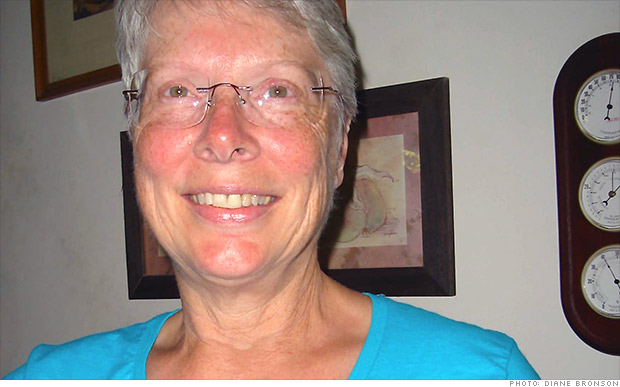How a librarian taught herself to invest and retired early
The market was swooning for much of 2008, and Diane Bronson made exactly the wrong call.
 At least, she thought it was a bad move. She yanked all her money from the stock market and put it in cash.
At least, she thought it was a bad move. She yanked all her money from the stock market and put it in cash.
"I decided to sell in a panic," she says. "That was in January 2008 before everything went to hell."
It went against every investment instinct the former librarian had
developed over the years. She was a "buy and hold" kind of investor who
prided herself on patience and a long-term focus. For decades, she put
her money into growth-oriented mutual funds.
But her hunch paid off.
She avoided the worst of the downturn when Lehman Brothers fell in
September 2008. She later got back into the market and has since enjoyed
one heck of a bull run the past five years. Her portfolio now provides a
quarter of her retirement income and allowed her to retire early in
2012.
"All my life, I've been a 100% stock-invested,
buy-and-hold kinda gal, but after watching my life savings drop by
nearly half from 2000 to 2002 and take another three years to get back
to their 1999 level, I just wasn't able to see that close to a 500-point
drop without my stomach dropping as well," she wrote in an e-mail,
referring to the wobbles in the market in January 2008.
Before she had always stayed put, remaining in the market even after
the dot-com crash in 2000. In fact, her portfolio only recovered from
that downturn in 2005, so it was scary for her to abandon everything in a
gamble to save her funds.
She ended up parking her savings in
money market funds, which were experiencing their own turbulence, though
not quite as bad as the stock market.
"I didn't have another five years to waste getting nothing out of my money," she said
Bronson never considered herself much of an investor. In the early days of her career, she had little to play around with.
Then she began to take her retirement and savings funds more seriously.
A librarian for more than two decades, it figures that her introduction
to the world of investing started with a reference book on mutual
funds.
She goes through four or five books per week, and many
of them have been investing books over the years. She's forgotten the
name of that first one, but one favorite, is the value investing classic
"A Random Walk Down Wall Street."
"Tell everyone to go to
their 332s," she said, referencing the section of the Dewey Decimal
System covering financial economics.
She still uses her local
library's resources to better understand the markets, including taking
advantage of a MorningStar subscription available there. She also checks
the market daily, reads a lot and looks over research notes from
Vanguard, which operates the funds she uses.
Mutual funds are still her preferred form of investing, because she
doesn't like trying to time the market. She dabbled a bit early on by
trying to pick individual stocks, but her returns were underwhelming.
"Bulls make money and bears make money, but pigs get slaughtered," she said. "I was a pig, and I got slaughtered."
Since the financial crisis, it's been a bit of an adjustment for her to
diversify. Sometimes she compares investing notes with her father, and
she gets envious that he's kept all his money in cash and stocks.
"I would never buy bonds before, and I never understood why people make
any money in bonds," she said. But now she has a quarter of her money
in bonds. She's also moved into larger-cap stocks in a quest for
stability.
She counts herself fortunate that her gambit allowed
her to retire two years early. Her investments have provided a nice
supplement to her pension. Had she not had that safety net, she would
have been a lot more fearful during the downturn.
She's not as
worried about timing the top of the market this time. All she wants is
peace, calm and steady returns to carry her through her golden years.
"I don't know what I'll do the next time the market seriously dives,"
she said. "I can't expect to be this lucky twice in a lifetime."










0 comments:
Post a Comment